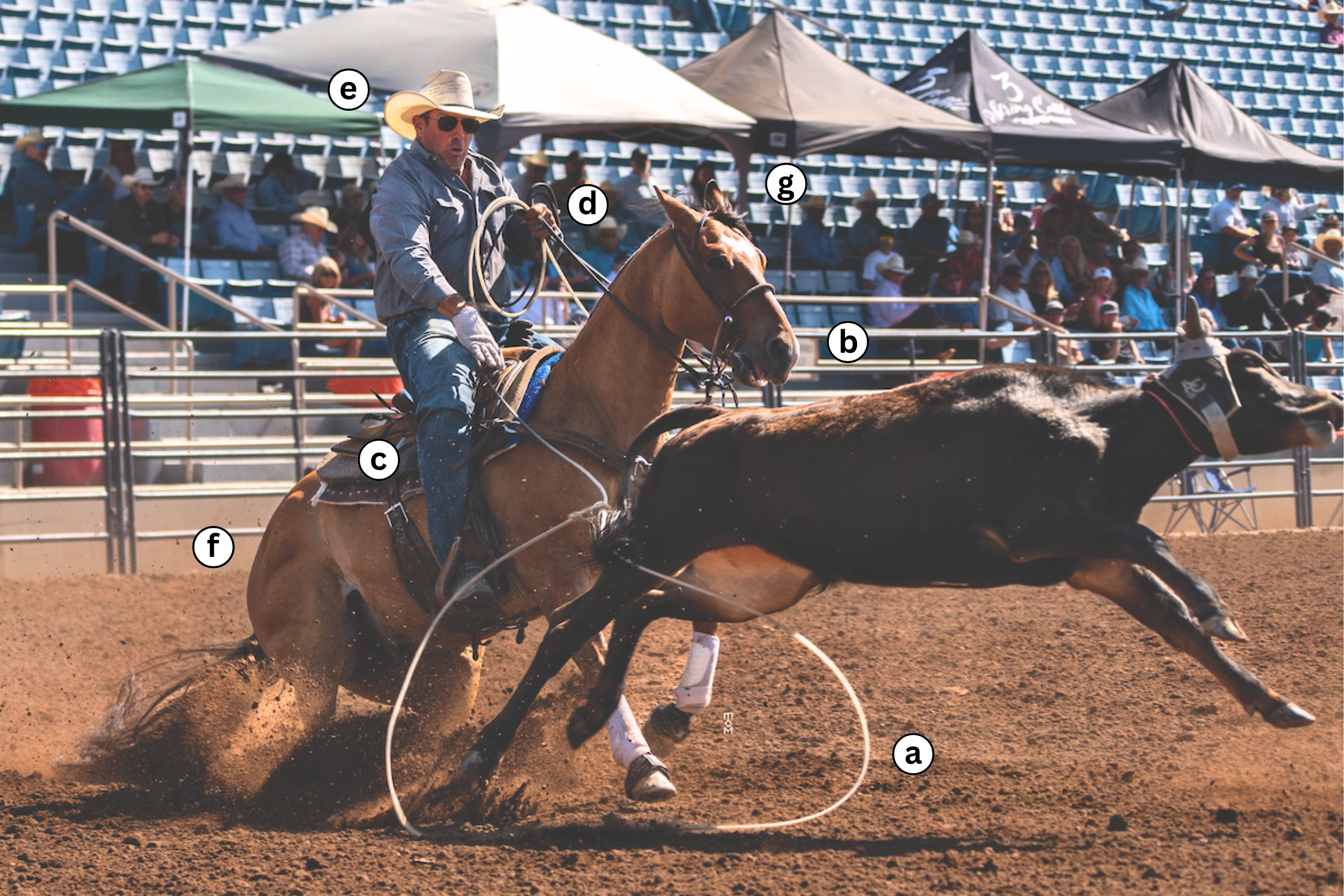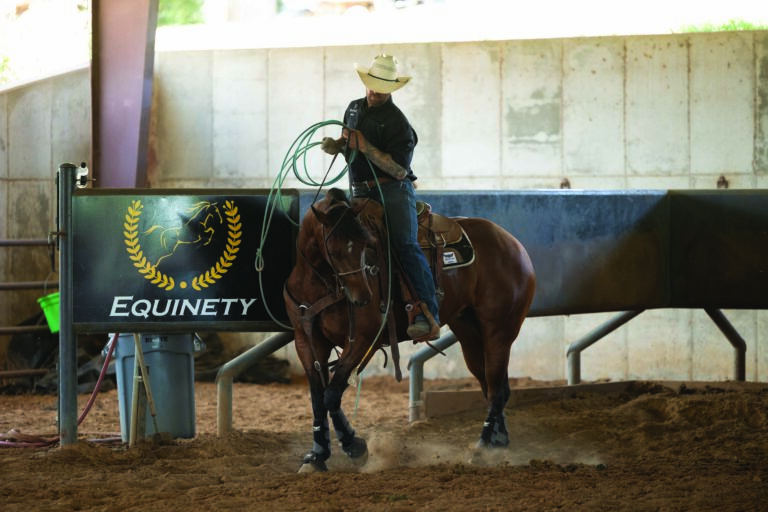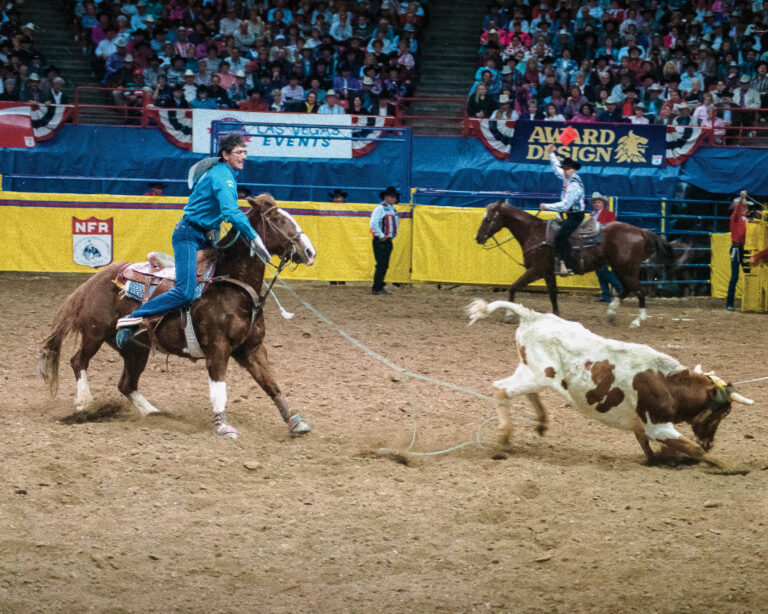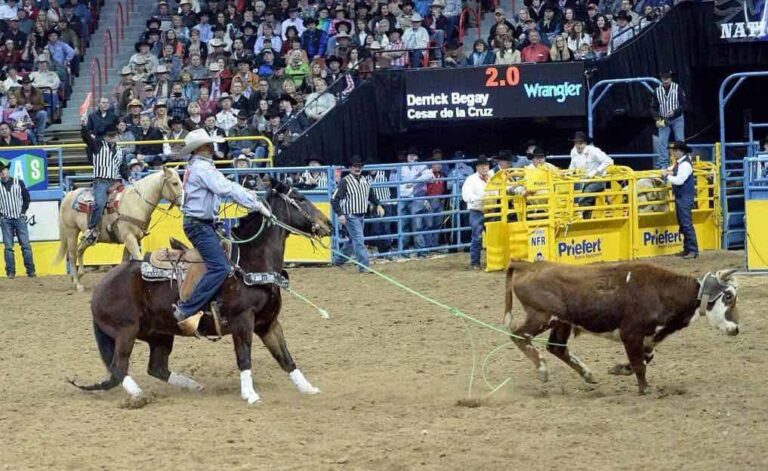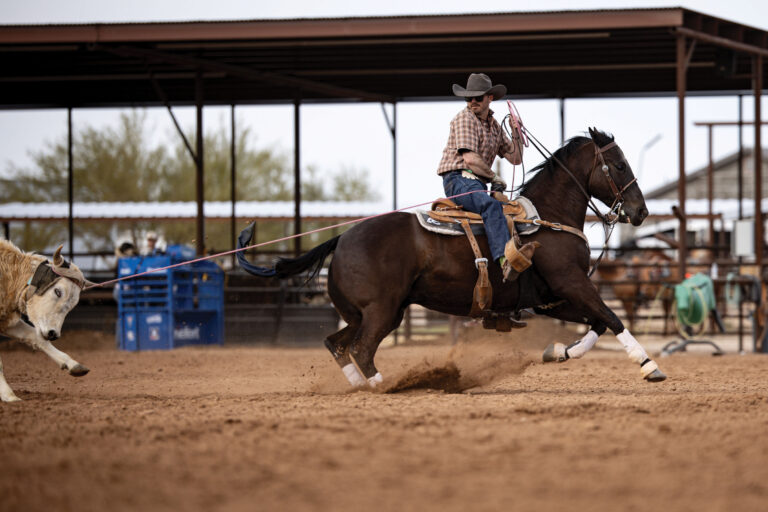SITUATION: Jordan Allyn and MR Stylist Hope winning the ARHFA Old West Intermediate Futurity Heeling Short Round
PAYOUT: $25,000
SCORE: 908.12 on four
a) THE LOOP
Just swing your rope hard and the talent of your horse or natural timing of the horse does a lot of it. The way they carry themselves, the way they’re collected in their stride. Then you’ve to get up, get your tip over that steer’s back and get your horse in a position to where you can be ahead of them. Always a big loop. You can run more cattle through a big one than you can a small one.
b) POSITION FOR THE JERK
That steer was just so strong and taking such big hops, and that horse just blew through the corner and we’re timed up with him so good. My two cents on heeling always is shoulders up, butt down. The horse needs to keep moving until after your rope hits the feet. Then when your rope hits the feet, then they can start to stop. That makes the bigger stop and that way their shoulders stay up and their butt stays in the ground for that jerk. If they’re stopping before the delivery, then they’re finished stopping by the time the jerk comes and take the jerk on all four feet on the front end most of the time, and then they lose the momentum.
c) LEGS AND FEET
I’m not doing a whole lot. That horse is so good in the box and down the arena, and he sets the corner up so good. The only thing I’m really trying to do is just stay square in my saddle and get my rope going over the steer’s left hip. Just really bear down and try to pick the best shot to where I can get dallied good on that strong of a steer.
d) LIGHT TOUCH (HANDS)
Just be light—don’t pull. It’s more of a bumping. If you pull, then they get on the bridle a little bit. If you just bump them and they get off the bridle. In the corner, maybe bump them once before and then right there, just throw. When that rope hits the feet, then sit down and just pick up the reins. Not really pulling, just picking up on the reins. There’s contact here, but it’s not hard.
e) MENTAL
That particular show, it was just survival. Those steers were so strong, so just get two feet caught, get dallied good and do the best you can because that roping was paying so much money and so deep that there was a lot for everybody. We just needed to just catch two feet every time.
f) STYLISH HOPE
I hadn’t ridden him a lot. I ran six or eight steers on him a few days before that and then I just got on him there, and he felt OK at the beginning. But the more steers we ran and the more jerks he took, the better he got and the stronger to the horn and the sharper he got.
g) HEAD UP, SHOULDERS IN
That’s picture perfect. Head up but soft into to the bridle. Shoulders up, butt in the ground. I mean, that saddle horn is not going to be hard to dally on because it’s right there coming up not on his front end bouncing around. There’s a lot of flow with the time you pull your slack and dally when the horse stops like that; it’s a real easy dally.
I want to keep his head up so that he’s elevated and his shoulders are up. When the horse’s shoulders are down, it tips your center of gravity over the front. You want the center of gravity to be straight up. Like, if you’re trying to throw a baseball, you don’t want to start with the ball in front of your face—you want to start with the ball behind you. So, all the forward momentum and all the drive is coming from the horse’s back end, not on the front end.
—TRJ—




